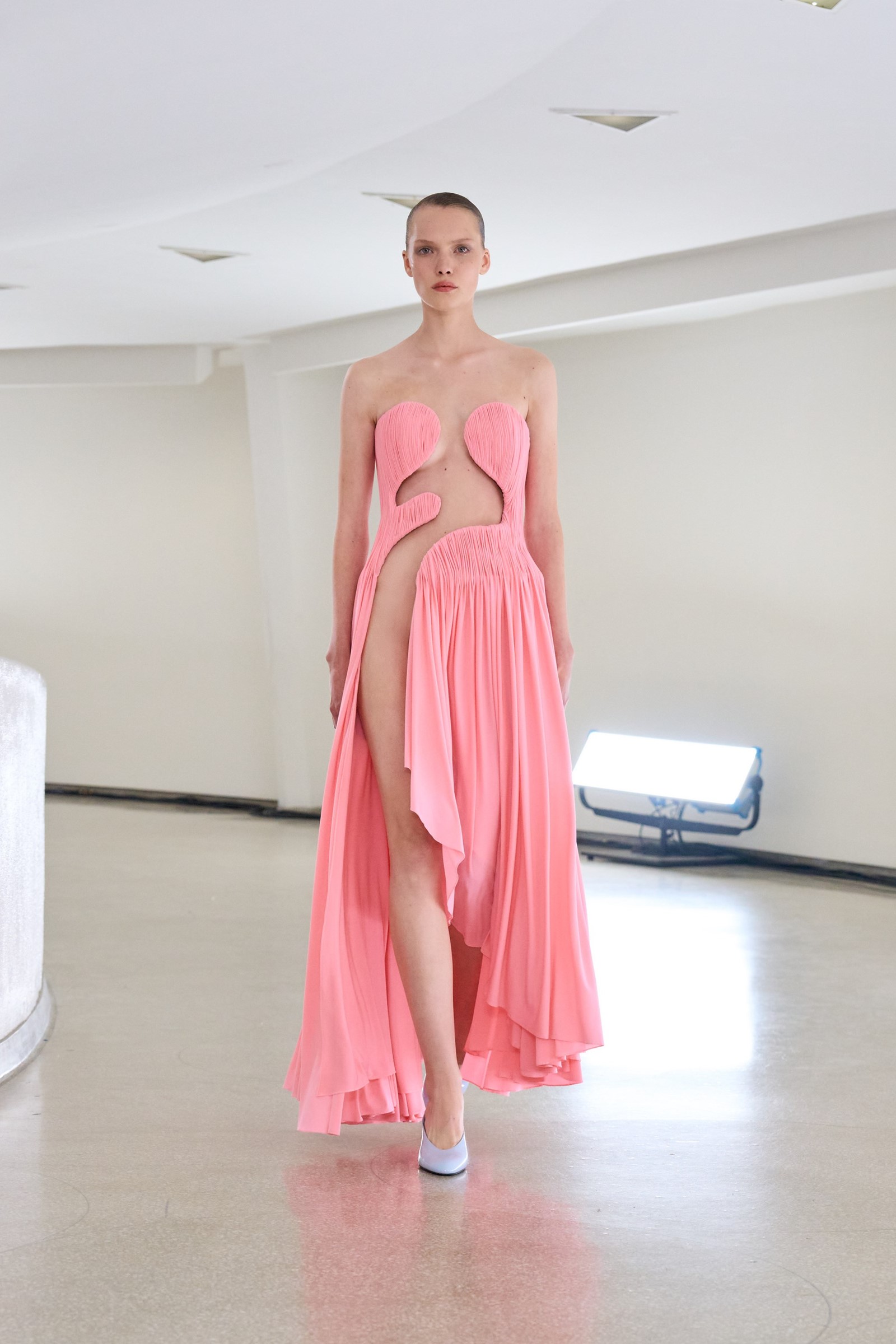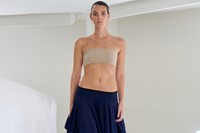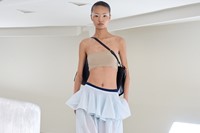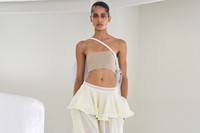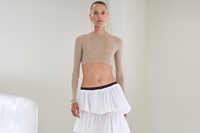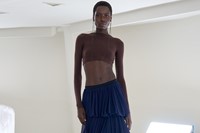Frank Lloyd Wright’s landmark design for the Guggenheim museum in New York took 15 years to build; Pieter Mulier’s latest Alaïa show was over in less than 15 minutes. But they were, it’s fair to say, cut from the same cloth – not least in their spiralling shapes that kind of look like an excellently-executed dangling orange peeling, whether in tufted silk floss or reinforced concrete.
The initial approach came, in a very 2024 way, via an Instagram like – on Mulier’s own, from the Guggenheim’s official account, the designer relayed. He was speaking one evening a few days before the show from a loft on the west side of Manhattan, meaning the entire Hudson River was ablaze in pastel shades from pink, through apricot to turmeric yellow (that’ll matter later, I promise). The like was for a dress from Mulier’s January Alaïa, show, the one that was 3D-printed to spiral around the body just like the Guggenheim’s helical ramp (he remade it in the Tricolor for Vogue World in July, too). So Mulier and the Alaïa team reached out and asked if, maybe, they could show the next collection in the space and the Guggenheim said yes.
“That really was the reason we came here,” said Mulier. It was a once in a lifetime opportunity – indeed, the Guggenheim has never let any other fashion brand show there, although apparently more than many have tried.
So, with the Guggenheim on the cards, Mulier began to think about New York in general. “Why New York?” he asks, rhetorically. “There are many reasons. Azzedine’s career was made here – some of the first people that believed in him were the Americans.” Which is true: while it was the staff of French Elle, including fashion editor Nicole Crassat and die-hard Alaïa fan (and friend) Carlyne Cerf de Dudzeele who wore Alaïa’s earliest clothes, it was Bill Cunningham who photographed them for Women’s Wear Daily. He wrote in his column in November 1981, that an “unknown stylist is dressing women, once again, in clothes designed to show off their curves”. The next year, Alaïa was invited to stage his first show in New York, paid for by Bergdorf Goodman; a spectacular second followed at the Palladium nightclub in 1985. Oh, and Alaïa clothes were placed in conversation with Warhol works at the Guggenheim’s Soho outpost in 2000, too.

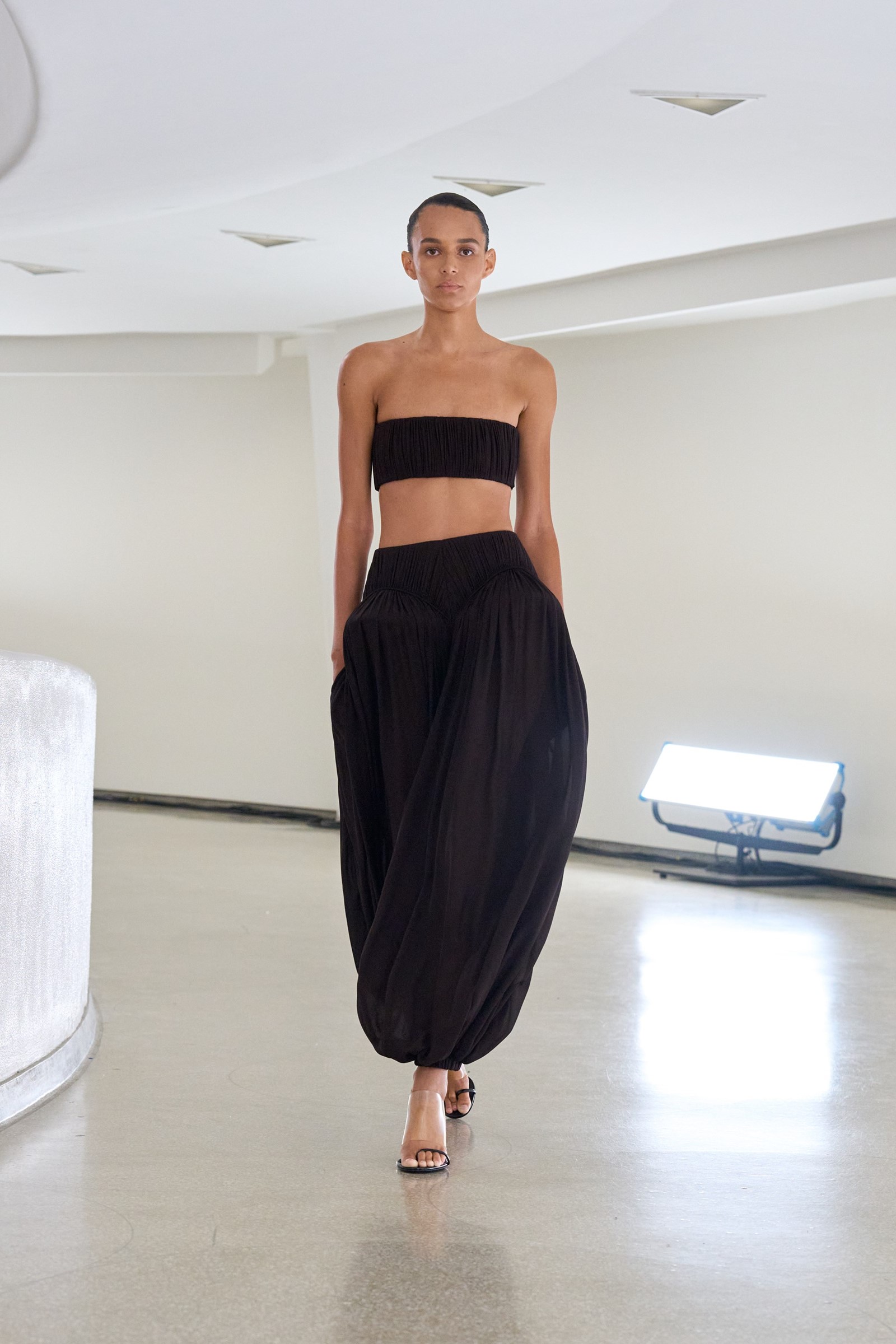
So there’s the deep link to the house. But Mulier himself also lived in New York for three years, while working for Calvin Klein. “And I was the most happy here,” he simply states. So his collection was kind of a homecoming to a home away from home – if you can say such a thing. It was also a heartfelt homage to American fashion. “American beauty” is how Mulier described it.
That was both modern, and historical. There was a link, again, to Azzedine – all roads seem to lead there, even Fifth Avenue. Alaïa’s legendary fashion collection included not just European couture masters, but the American greats – Charles James, the modernist feminist designer Claire McCardell, and especially Hollywood costume designer Gilbert Adrian – the first show staged by the Fondation Azzedine Alaïa following Alaïa’s death placed his work in conversation with Adrian’s. One time, I was lucky enough to have dinner with Azzedine at the Ritz and he told me how much he loved Adrian, and how many Adrians he had – well, he said beaucoup, including many originally worn by Joan Crawford. “These are all references that I love, and that Azzedine loved as well,” Mulier says – he also collects, hence they were joined by the likes of Halston, James Galanos, Geoffrey Beene, alongside as his utmost reverence and respect for Alaïa’s own reshaping of fashion. And although Alaïa is often seen as the most Parisian of designers, there’s something American to his use of stretch knits, his glorification and liberation of the body, his systems of wrapping and draping with minimised seams and fastenings.
And so, that’s what we saw spiralling around the whirly-swirly peel rotunda – an exercise in simplicity, in purity and form, echoing the work of those fashion greats. Pieces were stripped to the fundamentals – circle skirts, draped hoods, capes with deep slits, bandeau tops. Present and correct was much of the spiral cutting that started the whole exchange – which echoes a famous Charles James dress, named the ‘Taxi’ (because it was as easy to get in and out of as one) and spun around the torso with a zipper, that Azzedine would riff on just as famously in the mid-1980s. And James also inspired a series of padded raw silk coats based on his famous ‘Eiderdown’ jacket of 1937, and a section in those Hudson sunset shades of taffeta inspired by that famous 1948 Cecil Beaton image of glacially chic Jamesian gowns. But Mulier sliced them into ruched sportswear separates, an idea which underpinned the whole offering – skater skirt peplums, a signature shape (“die-hard Alaïa,” in Mulier’s words) were cut atop wide, slouchy knit tracksuit trousers. “Sportswear shapes with techniques that are the opposite,” he stated. There were no buttons and no zips. And, for the ultimate in Americana, a sequence of draped evening dresses seemed to float around the body, full Barnum and Bailey magic that was actually the result of ferociously complex interior architecture. Lloyd Wright would be very happy.
“It’s very easy,” said Mulier, of the collection. Of course, it both was and it wasn’t. A contradiction that, I think, would make Alaïa happy too.
